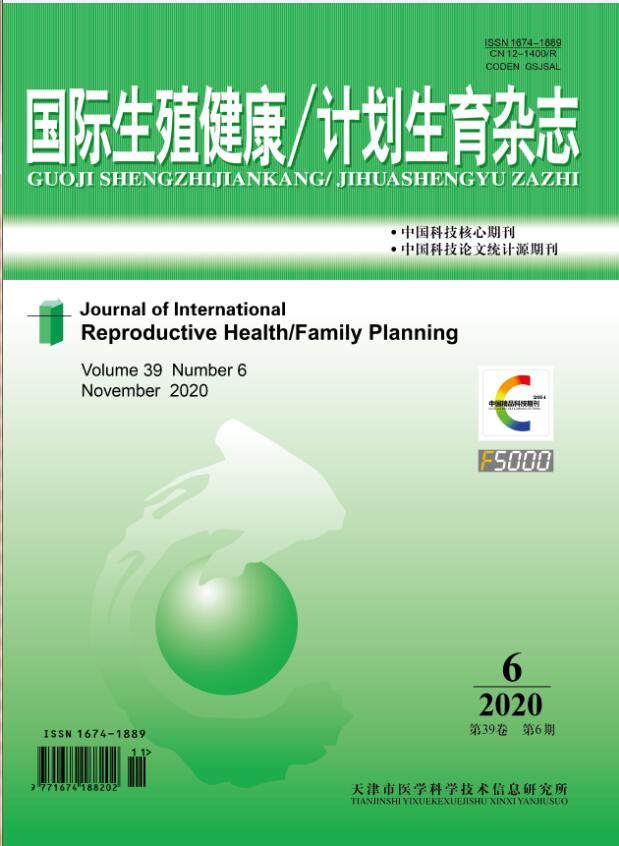|
|
Research and Development of Genetics/Genomics in Reproductive Medicine
LIU Jia-yin;WU Bai-lin
2014, 33 (3):
149-153.
Improving reproductive health and reduce birth defects are important mission in the 21st century in the field of reproductive medicine of China. By a national survey in 2011, the incidence of birth defects in China was 5.6 % (approximately 900 000 new cases each year), which is nearly two times higher than that for developed countries and causes annual economic burden of the state and society as much as hundreds billion dollars. Of them, the majority of birth defects and reproductive related diseases including infertility are complex disorders, which involve the interaction of genetic factors (causative or predisposing) and environment conditions. The first draft of decode of Human Genome in 2003 knocked on the door of post-genome era and promoted genomic medicine -- the foundation of personalized medicine. In the past years, discovery of numerous genetic/genomic variants associated with birth defects and reproductive disorders have been revealed and development of advanced technology based genomic profiling platform (i.e. microarray-biochip and next-generation sequencing) are rapidly applied to the field of reproductive medicine, demonstrating the powerful combination of life science, biomedicine, information technology and computational science.
This mini-review focuses on recent genetics/genomics research and development in the field of reproductive medicine of China:① Two high-impact research articles, recently published by Cell and Nature, showed precise genomic profiling of oocytes and early embryos: One group revealed genome analyses of single human oocytes by using multiple annealing and looping-based amplification cycle-based technology and sequencing the triads of the first and second polar bodies and the oocyte pronuclei, which demonstrated that the genome of the oocyte pronucleus, including information regarding aneuploidy and SNPs in disease-associated alleles, can be accurately deduced from the genomes of polar bodies. This may be applied to preimplantation genomic screening in IVF clinic to enable accurate and cost-effective selection of normal fertilized eggs for embryo transfer. Another team reported a comprehensive analysis of transcriptome dynamics from oocyte to morula in both human and mouse embryos, using single-cell RNA sequencing. They identified novel stage-specific monoallelic expression patterns for a significant portion of polymorphic gene transcripts(25% to 53%), which indicates a sequential order of transcriptional changes in pathways of cell cycle, gene regulation, translation and metabolism, acting in a step-wise fashion from cleavage to morula. They also identified conserved key members (or hub genes) of the human and mouse networks. These genes represent novel candidates that are likely to be key in driving mammalian pre-implantation development. ② Two GWAS of polycystic ovary syndrome(PCOS), published by Nature Genetics, with a total of 8 226 cases and 7 578 controls: Identified 11 new loci associated with PCOS in Han-Chinese. The association signals show evidence of enrichment for candidate genes related to insulin signaling, sexual hormone function and type 2 diabetes. Other candidate genes were related to calcium signaling and endocytosis. The findings provide new insight into the pathogenesis of PCOS and direction for discovering the biological mechanisms. ③ Whole exome sequencing for premature ovarian failure/primary ovarian insufficiency(POF/POI): In the March of this year, the New England Journal of Medicine published two independent studies that identified pathogenic mutations in the meiosis genes(HFM1 and STAG3) caused POF/POI in Chinese and European pedigrees respectively, which is the first time that detected genetic defects of meiosis genes in patients with POF/POI and supported by evidences from knock-out mice. ④ GWAS of Non-obstructive azoospermia(NOA), published by Nature Genetics, with a total of 2 927 cases and 5 734 controls: Identified 3 common variants contributing to NOA in Han-Chinese men using a three-stage genome-wide association study. The findings implicate genetic variants at 1p13.3, 1p36.32 and 12p12.1 in the etiology of NOA.
This mini-review also briefly discussed the GWAS of endometriosis and the advancement of preimplantation genetic diagnosis/screening(PGD/PGS) with genomic profiling technology, such as CGH array, SNP array and next-generation sequencing (NGS), resulted in significantly improves the clinical pregnancy rate.
Related Articles |
Metrics
|

